No Fixed Abode: Sleepy In CU-Ville

Genchi gembutsu. It’s a term I heard fairly often during my time in the Great Midwestern Sedan Factory and it means, more or less, “Go look at the issue.” In the years since, I’ve often heard “Agile coaches” and “Scrum masters” in IT talk about “Gemba Walks,” which are supposed to be the same thing. The problem is that software development is nothing like a factory floor, system administration even less so, and if I have to hear one more dimwitted IBM consultant with a two-year DeVry degree lecturing me about “how Japanese manufacturers do things” I’m going to drag said consultant into the paint booth at Marysville and let him drown in whatever shade of grey is being indifferently sprayed on the cars that day. It’s cargo culture at its most pathetic, garnished with a sprig of racism.
Yet there is more than enough truth in the original application of genchi gembutsu. If you’re hearing about a problem on the factory floor, don’t waste time talking about it in the office. Go to the place and look at the problem. Until you do that, you’re just guessing.
It was with that concept in mind that I borrowed a three-row CUV recently for a 1,300-mile trip around the Midwest. Over and over again I’ve decried the modern fetish for massive unibody crossovers, but rarely have I driven one for more than a few miles at a time. This seemed like a good time to “go to the place” and “look at the problem.” I took this vehicle and tested it on its ability to substitute for vehicles both smaller and larger. A week later, I remain shaken, if not stirred, by the experience.
The astute reader will note than I’m leaving out the brand and model of the three-row crossover in question, because I’m not trying to a review a particular take on this extremely generic formula. The only identifying information I’ll give is that the sticker price was under $50,000, although not by much. It came out of the “mommyblogger” rotation in a major city and had more than six thousand miles on it when I took delivery. Here in Ohio, it would have to be sold as a used car. It will likely be run through the auctions as an “executive program” vehicle and it will wind up being driven by a mommy (or daddy) who does not blog. Let’s call it the “Splenda,” since just like that artificial sweetener the three-row CUV is intended to be a substitute of sorts.
You buy a Splenda because financial, physical, or behavioral constraints prohibit you from buying a Tahoe but you also can’t afford to have the neighbors see you in an Accord or Camry. It’s best to think of it as a minivan with some of the capacity and usefulness removed in the pursuit of style and/or social acceptability. It’s no coincidence that Toyota and Honda both make their Splendas from the minivan platform; in many ways these are just minivans with a raised floor.
Long-time readers will recall that I split my non-leisure driving time between a Honda Accord and a Chevrolet Silverado, which are extremely generic vehicles even if my particular examples of them are a bit over-specified. For this Splenda test, I took various tasks that I usally assign to the Accord or the Silverado, assigned them to this crossover, and judged how well the Splenda did compared to the vehicle that would normally perform the job.
Task Zero: Cross-country tourism.
I started with a 700-mile drive to visit various touristy sites, split about 60/30/10 between freeway, two-lane state routes, and back roads. Without the presence of Splenda, this would be an Accord trip — and almost immediately I wished for the crossover to be replaced with said Accord, a wish that recurred with depressingly regularity through my drive. To begin with, Splenda didn’t have the Accord’s sneeze-proof stability on the freeway. Left to itself, the vehicle would sniff from one side of the lane to the other. Crosswinds greatly exacerbated this tendency. When the road was dry, I found Splenda to be considerably less pleasant than my four-and-a-half-year-old, 60,000-mile coupe. When the rain hit, however, I was grateful for Splenda’s higher windshield, which proved to be far less susceptible to 18-wheeler-induced spray-blindness.
The extra half-ton of weight that Splenda carries compared to the Accord revealed itself in a few different ways. It’s sluggish in normal driving, which means that you reach for the kickdown gear more often, which drops mileage into the very low twenties. I’d have used no more fuel had I chosen my 5,800-pound, 420-horsepower Silverado instead. The difference between Splenda and the Accord on back roads is very similar to the difference between my memories of running a 5k at 185 pounds and my current experience of jogging around the neighborhood at about 30 percent more weight, with one important difference: Splenda carries its extra weight nice and high, which requires some fairly massive spring and damping rates. The crossover rides worse than the sedan but also has more body roll. It’s a Christmas miracle!
For Task Zero, I’d rate Splenda as inferior to the Accord and equal to the Silverado.
Task One: Big Boxes
While I was off playing tourist, a couple of boxes arrived at my local FedEx store: my new 30-quart Pelican Cooler and a Lynskey R275 road bike for this summer’s cycling adventures. I know from experience that full-sized bike boxes won’t fit in the Accord, so I took Splenda to the FedEx store, folding both rows of seats behind me.
Given Splenda’s size, I expected it to swallow both boxes with aplomb. It wasn’t that simple. The bike box couldn’t go in vertical, nor could it quite fit horizontally. I had to go at an angle, and the sloping rear window prevented me from putting the Pelican on top of the slanted box via the cargo entrance. I solved the issue by shoving the bike box up to 45 degrees and putting the cooler box in through the left rear door. That worked well enough.
For Task One, I’d rate the crossover as infinitely superior to the Accord and inferior to the Silverado, which would have swallowed both boxes in its 6.5-foot bed sans complaint.
Task Two: Bike Trip, Part One
On Friday night, my 9-year-old son and I grabbed our mountain bikes and headed for the nearest entrance to the Olentangy Trail. From there, we rode 14 miles to a dinner meeting with Danger Girl downtown. Once dinner was over, we tossed our bikes in the back of the Silverado and caught a ride back up to Splenda.
My mountain bike, a Lynskey Pro29, is just this side of enormous, so I expected that I would have trouble fitting it in Splenda. It went in through the hatch — barely. My son’s Cleary Meerkat 24-inch MTB was a tight fit on top of it, with a blanket between the bikes to cut down on scratching. There was not room for either half of the second-row seat to come up, so I put my son in the front seat. This would have been unacceptable for anything besides a short neighborhood drive at low speeds. Had we been riding our mountain bikes at an actual mountain bike trail, we would have ruined Splenda’s leather interior with mud. Any serious cyclist would have to put a hitch rack on Splenda, just like the one I have on my Accord.
For Task Two, I would rate the crossover superior to a sedan without a hitch rack and inferior to the Silverado. Putting a hitch rack on both Splenda and my Accord would make them effectively equal.
Task Three: Bike Trip, Part Two
Alright! It’s Sunday, which means we’re either racing a car or a bicycle around these parts. This particular Sunday was a BMX race, so we needed to fit three people, two bicycles, one gear bag, the aforementioned Pelican Cooler, three folding chairs, and a toolbox in the vehicle. Splenda couldn’t do it, so I called an audible and switched to the Silverado. With a hitch rack, Splenda could have done it, but the same is true for my Accord, which we have used multiple times in exactly this situation.
For Task Three, Splenda failed the requirements.
Task Four: The Worker Bee Goes To Work
I commuted to my day job in Splenda four times. I appreciated how easy it was to park the vehicle thanks to its sub-Tahoe proportions, but I didn’t like that sluggish response from the powertrain, nor did I like getting fuel economy in the teens. In traffic, Splenda’s extra ride height gave me a great view of the functionally identical vehicles all around me; the SUV was an advantage in that respect 20 years ago, but this seat positioning is the default now.
For Task Four, Splenda was inferior to the Accord and superior to the Silverado.
Final Results: I was surprised at just how little advantage Splenda offered compared to a regular family sedan. In fact, I think you can boil it down to just two things: a stubby third row and the ability to carry slightly larger boxes. The problem is that a real minivan would have done a better job than Splenda in pretty much all circumstances, particularly Task Three, which is easily possible in a Pacifica or Sienna. Furthermore, the dynamic advantage of Splenda over a minivan is virtually nil. So why bother?
I think the only way to understand Splenda is to think of it as a 1977 Cutlass Supreme Coupe. The people who bought “PLCs” knew they were giving up space and utility compared to a sedan or wagon. They did it because they wanted the look. The same is true of Splenda. It’s not very good at doing car stuff and it’s not very good at doing minivan/truck stuff. You have to want something that looks like Splenda in order to buy a Splenda.
Were I lucky enough to have four sons instead of one, I’d suck up my pride and I’d get a Pacifica. Since I’m not that lucky, Splenda offers me virtually zero additional functionality but it extracts a significant penalty in everything from purchase price to operating costs to vehicle dynamics. And that, as they say, is that. I’ve been to the three-row mountaintop. And I have no desire to ever go back.
[Image: Subaru]
(This image depicts a concept vehicle that never made it to production, and was used only for illustrative purposes. Jack’s secret remains safe – Ed.)

More by Jack Baruth
Latest Car Reviews
Read moreLatest Product Reviews
Read moreRecent Comments
- Slavuta CX5 hands down. Only trunk space, where RAV4 is better.
- Kwik_Shift_Pro4X Oof 😣 for Tesla.https://www.naturalnews.com/2024-05-03-nhtsa-probes-tesla-recall-over-autopilot-concerns.html
- Slavuta Autonomous cars can be used by terrorists.
- W Conrad I'm not afraid of them, but they aren't needed for everyone or everywhere. Long haul and highway driving sure, but in the city, nope.
- Jalop1991 In a manner similar to PHEV being the correct answer, I declare RPVs to be the correct answer here.We're doing it with certain aircraft; why not with cars on the ground, using hardware and tools like Telsa's "FSD" or GM's "SuperCruise" as the base?Take the local Uber driver out of the car, and put him in a professional centralized environment from where he drives me around. The system and the individual car can have awareness as well as gates, but he's responsible for the driving.Put the tech into my car, and let me buy it as needed. I need someone else to drive me home; hit the button and voila, I've hired a driver for the moment. I don't want to drive 11 hours to my vacation spot; hire the remote pilot for that. When I get there, I have my car and he's still at his normal location, piloting cars for other people.The system would allow for driver rest period, like what's required for truckers, so I might end up with multiple people driving me to the coast. I don't care. And they don't have to be physically with me, therefore they can be way cheaper.Charge taxi-type per-mile rates. For long drives, offer per-trip rates. Offer subscriptions, including miles/hours. Whatever.(And for grins, dress the remote pilots all as Johnnie.)Start this out with big rigs. Take the trucker away from the long haul driving, and let him be there for emergencies and the short haul parts of the trip.And in a manner similar to PHEVs being discredited, I fully expect to be razzed for this brilliant idea (not unlike how Alan Kay wasn't recognized until many many years later for his Dynabook vision).
















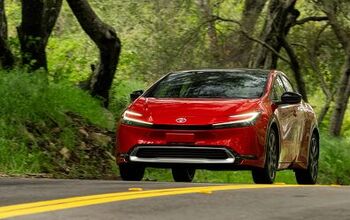

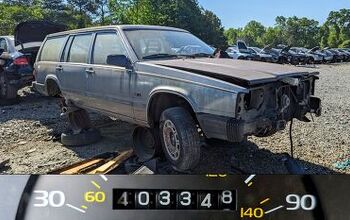


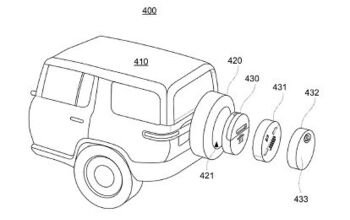

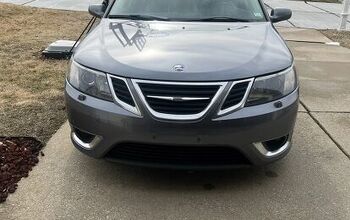
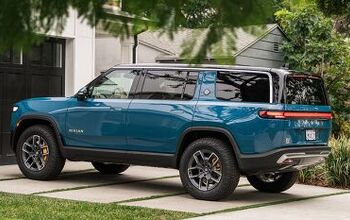


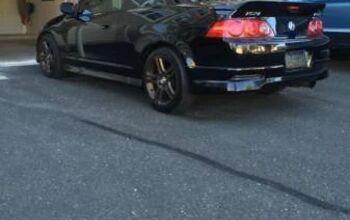
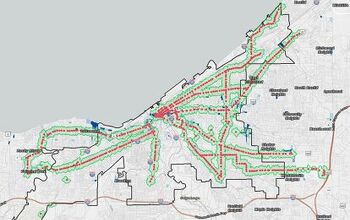
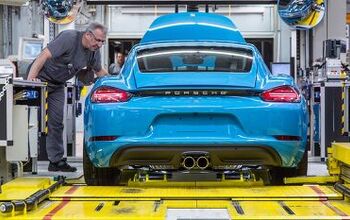
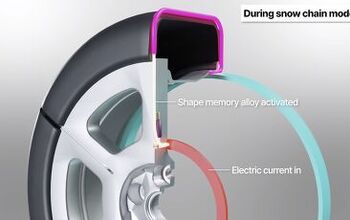


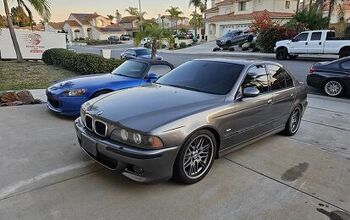
Comments
Join the conversation
You have hit the nail on the head! The 3 row belly dragger is the minivan coupe!
I want a 3 row unibody (Durango) over a minivan because I sometimes tow more than 5000# and six in a pickup is crowded. Plus a pickup takes up a lot of garage space. For big boxes I have a trailer. YMMV I would gladly trade the 2 row CUV on a minvan in a heartbeat, but the rules were MIL would give use the CUV for when our daughter drives to school but only if we promise not to trade it. Our daughter doesn't like it either. She wants a current gen Charger. Go figure.